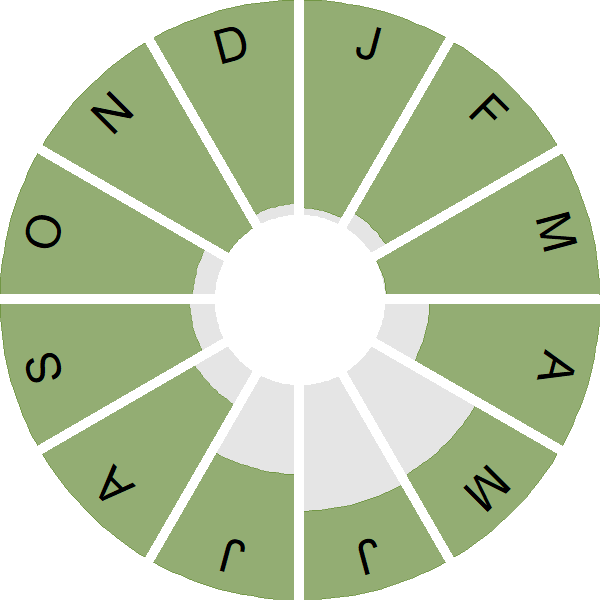Redshank
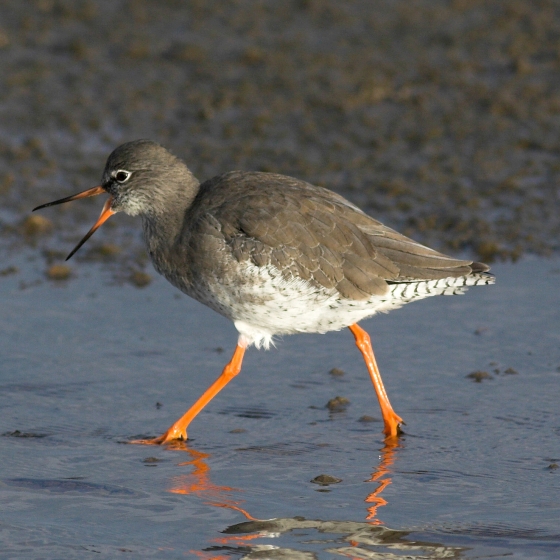
Introduction
Distinctive with its red 'shanks' (or legs) this noisy wader is both a common breeder and a winter visitor.
In the breeding season Redshank mostly breed in lowland wet grassland sites, with pairs nesting close together to gain benefits from communal territorial defence. Once widespread across the country, BTO monitoring shows their distribution is becoming increasingly fragmented as numbers have fallen rapidly in response to changing agricultural practices.
In common with all waders, Redshank chicks are able to walk and feed almost as soon as they leave the nest. However, this makes them vulnerable to predators and they need areas of tall vegetation to hide in, close to damper patches where they can find invertebrate food.
- Our Trends Explorer gives you the latest insight into how this species' population is changing.

Key Stats
Identification
ID Videos
This section features BTO training videos headlining this species, or featuring it as a potential confusion species.
Common shanks
Songs and Calls
Song:
Alarm call:
Flight call:
Status and Trends
Conservation Status
Population Change
Range contraction had occurred from considerable areas of the UK by 1988-91, probably as a result of the drainage of farmland (Gibbons et al. 1993). WBS/WBBS results show a decline along waterways that apparently accelerated during the 1990s. BBS shows continuing overall decrease. Surveys in England and Wales revealed a decrease of 29% in breeding birds in wet meadows between 1982 and 2002, with the most pronounced declines recorded in the Midlands (over 80%) the southwest (over 50%) and the north of England (over 45%) (Wilson et al. 2005a). Another survey revealed that Redshank had disappeared from half of plots in grassland marginal upland areas of Britain between the 1970s and 1999-2000 (Henderson et al. 2004). The substantial section of the British population that nests on saltmarshes decreased by 23% between 1985 and 1996, apparently as a result of increased grazing pressure (Brindley et al. 1998, Norris et al. 1998). By 2011, fewer than 12,000 breeding pairs remained on saltmarshes, a decrease of 53% from the 1985 survey: a better understanding of saltmarsh grazing practices and longer-term management of this habitat is urgently needed (see Conservation Actions section, below). Minor increase in breeding numbers in the Uists between 1983 and 2014 runs against the UK trend and heightens the relative importance of this population (Calladine et al. 2015). Wintering populations (augmented by many Icelandic and some other northern European breeders) have shown some increase since the 1970s but have been in decline since about 2001, although the most recent counts suggest this decline may now have slowed and wintering numbers since 2011/12 have remained relatively stable (WeBS: Frost et al. 2020). The success of nests at the egg stage has risen steeply since the 1960s.
In 2009, UK population decline was added to the criteria by which Redshank qualifies for amber listing; the scale of decline reported here already meets the red-list criterion, however. There has been a decline across Europe since 1980 (PECBMS: PECBMS 2020a>).
Distribution
In winter, Redshanks are widely distributed around the coasts and in low-lying inland river valleys and callows, with highest densities associated with major estuaries and the Northern Isles. Breeding Redshanks favour a variety of damp habitats including coastal marshes, lowland wet grasslands and rough pasture on moorland fringes. Highest densities are in Caithness, the Northern Isles, Outer Hebrides, the Pennines and Lancashire, and the coastal marshes of southeast England.
Occupied 10-km squares in UK
2007/08–10/11
or view it on Bird Atlas Mapstore.
2008–11
or view it on Bird Atlas Mapstore.
European Distribution Map
Distribution Change
Redshank breeding range has contracted by 44% across Britain & Ireland since the 1968–72 Breeding Atlas and reductions in abundance are also apparent in the remaining range.
Change in occupied 10-km squares in the UK
from 1981–84 to 2007–11
or view it on Bird Atlas Mapstore.
from 1968–72 to 2008–11
or view it on Bird Atlas Mapstore.
Seasonality
Redshanks are recorded throughout the year, especially in autumn and winter when large numbers can be seen at coasts and large wetlands.
Weekly pattern of occurrence
The graph shows when the species is present in the UK, with taller bars indicating a higher likelihood of encountering the species in appropriate regions and habitats.

Habitats
Breeding season habitats
Relative frequency by habitat
The graph shows the habitats occupied in the breeding season, with the most utilised habitats shown at the top. Bars of similar size indicate the species is equally likely to be recorded in those habitats.

Movement
Britain & Ireland movement
Foreign locations of birds ringed or recovered in Britain & Ireland
Dots show the foreign destinations of birds ringed in Britain & Ireland, and the origins of birds ringed overseas that were subsequently recaptured, resighted or found dead in Britain & Ireland. Dot colours indicate the time of year that the species was present at the location.
- Winter (Nov-Feb)
- Spring (Mar-Apr)
- Summer (May-Jul)
- Autumn (Aug-Oct)

European movements
EuroBirdPortal uses birdwatcher's records, such as those logged in BirdTrack to map the flows of birds as they arrive and depart Europe. See maps for this species here.
The Eurasian-African Migration Atlas shows movements of individual birds ringed or recovered in Europe. See maps for this species here.
Biology
Productivity and Nesting
Nesting timing
Egg measurements
Clutch Size
Survival and Longevity
Survival is shown as the proportion of birds surviving from one year to the next and is derived from bird ringing data. It can also be used to estimate how long birds typically live.
View number ringed each year in the Online Ringing Report.
Lifespan
Survival of adults
Survival of juveniles
Biometrics
Wing length and body weights are from live birds (source).
Wing length
Body weight
Ring Size
Classification, names and codes
Classification and Codes
- Order: Charadriiformes
- Family: Scolopacidae
- Scientific name: Tringa totanus
- Authority: Linnaeus, 1758
- BTO 2-letter code: RK
- BTO 5-letter code: REDSH
- Euring code number: 5460
Alternate species names
- Catalan: gamba roja comuna
- Czech: vodouš rudonohý
- Danish: Rødben
- Dutch: Tureluur
- Estonian: punajalg-tilder
- Finnish: punajalkaviklo
- French: Chevalier gambette
- Gaelic: Maor-cladaich
- German: Rotschenkel
- Hungarian: piroslábú cankó
- Icelandic: Stelkur
- Irish: Cosdeargán
- Italian: Pettegola
- Latvian: plavu tilbite
- Lithuanian: raudonkojis tulikas
- Norwegian: Rødstilk
- Polish: krwawodziób
- Portuguese: maçarico-de-perna-vermelha / perna-vermelha
- Slovak: kalužiak cervenonohý
- Slovenian: rdecenogi martinec
- Spanish: Archibebe común
- Swedish: rödbena
- Welsh: Pibydd Coesgoch
- English folkname(s): Watery Pleep, Ebb Cock, Pool Snipe
Research
Causes of Change and Solutions
Causes of change
There is good evidence to suggest that Redshank decline is related to changes in habitat management, in particular drainage and agricultural intensification. Where birds still nest in wet meadows, a suggested solution includes manipulating water levels, reducing grazing and suspending agricultural operations during the nesting period.
Further information on causes of change
Agricultural intensification has been associated with the decrease of several grassland breeding wader species (Wilson et al. 2004, 2005a). Conversion of grassland to arable cultivation (Robinson & Sutherland 2002) and grassland intensification, such as reseeding, use of artificial fertilizers, switch from hay to silage and lowering of water levels all decrease the suitability of habitat for breeding waders (Green & Robins 1993). Grass grown for silage presents a tall, dense and uniform sward in spring that is cut earlier than hay meadows, incurring additional losses of nests and chicks (Beintema & Muskens 1987, Kruk et al. 1996, Vickery et al. 2001, Atkinson et al. 2004). Grassland intensification and land drainage have resulted in dry ground with dense, homogenous swards which are rarely used by breeding waders (Smart et al. 2006). High stocking densities bring associated risks of trampling of nests and chicks (Beintema & Muskens 1987, Green 1988), though cattle produce taller swards than sheep, hence providing a better breeding habitat for Redshank (Smart et al. 2006). Studies of godwits and Lapwing have suggested that deteriorating breeding habitat makes wader nests and chicks particularly vulnerable to predators (Bolton et al. 2007, Teunissen et al. 2008, Schekkerman et al. 2009), though predation on Redshank eggs and chicks by native predators remains to be studied. However, in the Uists, where a minor population increase has occurred (Calladine et al. 2015), clutch survival is significantly lower in areas where introduced Hedgehogs Erinaceus europaeus are more abundant, and cameras showed that levels of nest predation by Hedgehogs are high in these areas (Calladine et al. 2017).
An intensive field study in Norfolk showed that density of breeding Redshank within coastal and inland grazing marshes was associated with wet features within each field: nest-site selection was associated with clumps of tall vegetation and hatching success was higher in areas of penetrable soil where this species prefers to feed (Smart et al. 2006). On coastal grassland, shallow wet features and vegetation structure have been shown to be important to several species of breeding waders (Vickery et al. 1997, Milsom et al. 2000, 2002, Eglington et al. 2008). Milsom et al. (2002) showed that adult Redshanks prefer to feed in wet rills than dry ones or on open grassland. Soil invertebrates are more accessible when water levels are just below the soil surface (Ausden et al. 2001).
In lowland England, where agricultural intensification has been intense and widespread, Redshank and other grassland-breeding waders have become restricted to areas managed as nature reserves or under agri-environment schemes (AES) (Wilson et al. 2004, 2007, Ausden & Hirons 2002). In Scotland, land use changes leading to a reduction in spring sward height were thought to have been a likely contributory factor to a 25-year decline on mixed farmland in Perthshire (Bell & Calladine 2017).
A study in Estonia found that breeding sites were preferentially located further away from woodland and suggested that woodland planting may have contributed to declines there (Kaasiku et al. 2019); however, no research has been undertaken to investigate whether planting may have contributed to declines in the UK.
Information about conservation actions
The existing evidence suggests that the decline of this species is driven mainly by changes in habitat management, in particular drainage and agricultural intensification, and hence conservation actions such as the restoration of habitat, manipulating water levels, reducing grazing and delaying mowing are likely to be important for Redshank.
Much recent research has focused on the impacts of grazing on breeding success, particularly on saltmarshes, and indicates that heavy grazing is detrimental (Norris et al. 2003; Malpas et al. 2013a) and that even light grazing can reduce breeding success to near zero (Sharps, E. et al. 2015), although there is also evidence that light grazing can sometimes benefit Redshank and that nesting densities tend to be higher on lightly grazed saltmarsh (Norris et al. 2003; Sharps, E. et al. 2016). Therefore, actions to maintain lower grazing densities or time of grazing to reduce pressure during the breeding season should be considered in order to help Redshank ( Sharps, E. et al. 2017). Also in relation to grazing, Smart et al. (2006) found that cattle produce taller swards than sheep, hence providing a better breeding habitat.
A study on the Wadden Sea found that delaying mowing on saltmarshes (until August) would decrease the proportion of broods at risk (Exo et al. 2017) and hence this should also be considered at UK sites where management includes mowing. Delayed mowing of grass grown for silage would also be prudent (see Causes of Change section, above).
Elsewhere, hedgehogs are a specific problem for Redshank and other ground nesting waders on the Uists (Calladine et al. 2015) and control of this introduced non-native species may be required to conserve Redshanks here.
AES management can be successful in increasing breeding pairs of Redshank on grassland fields in Scotland (O'Brien & Wilson 2011) but agri-environment schemes are not currently delivering conservation benefits on saltmarshes and reviewing the management prescriptions to improve their effectiveness is a priority (Mason et al. 2019).
An Estonian study found that apparently suitable sites close to woodland were avoided (Kaasiku et al. 2019); hence habitat improvement should be focused on areas away from woodland and new woodlands should not be planted close to existing sites.
Publications (14)
Efficacy of methods for producing population trends of breeding waders from Breeding Bird Survey data
Author: Brighton, C.H., Gillings, S. & Massimino, D.
Published: 2025
This report investigates the efficacy of methods for producing population trends from BTO/JNCC/RSPB Breeding Bird Survey data for six breeding wader species in the UK. It examines the effects of ...
23.06.25
BTO Research Reports BTO Research Reports
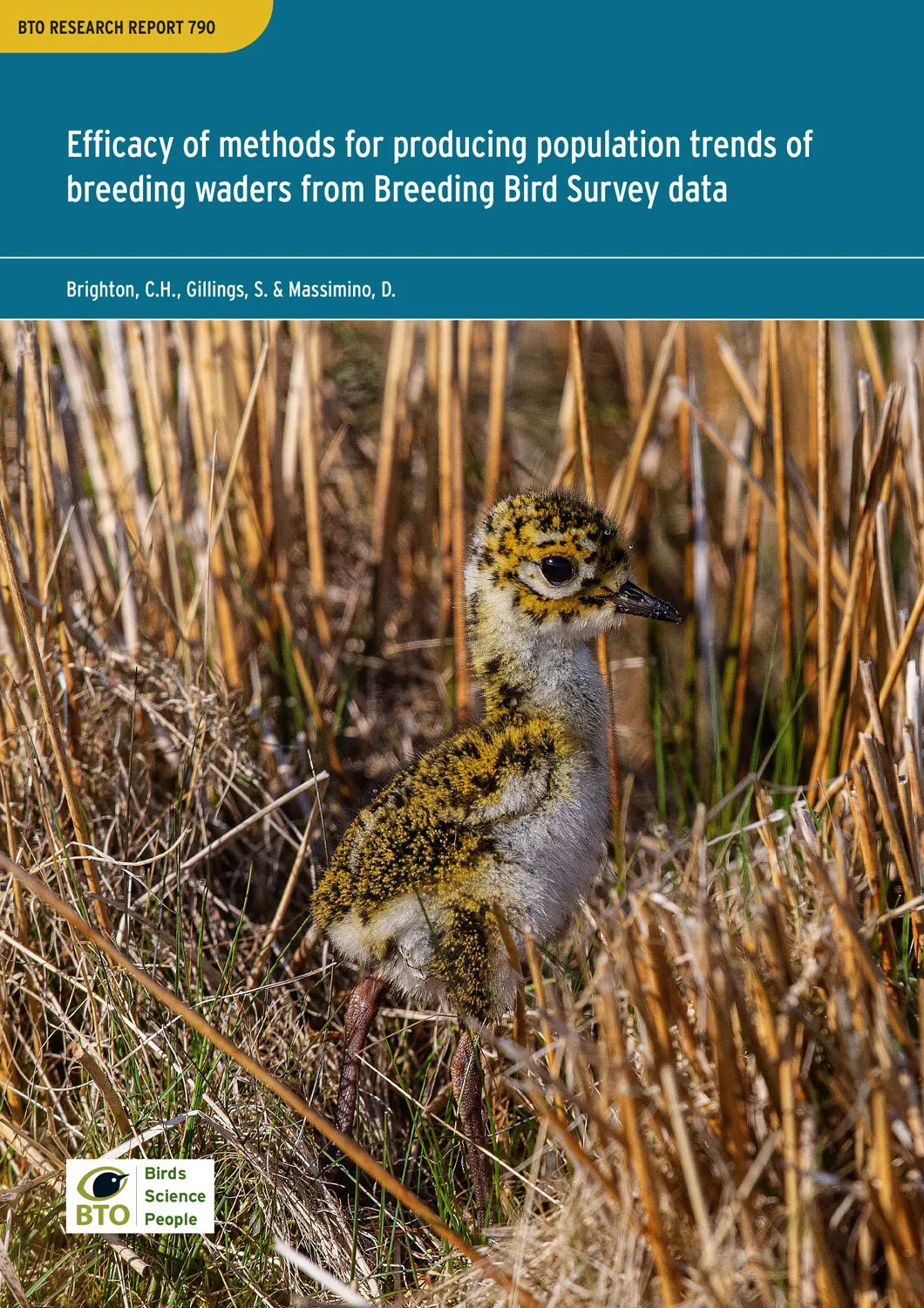
Landscape context influences efficacy of protected areas and agri-environment scheme delivery for breeding waders
Author: Hawkes, R.W., Mason, L.R., Conway, G.J., Siriwardena, G.M., Grice, P.V., Cole, A.J. & Peach, W.J.
Published: 2025
16.04.25
Papers
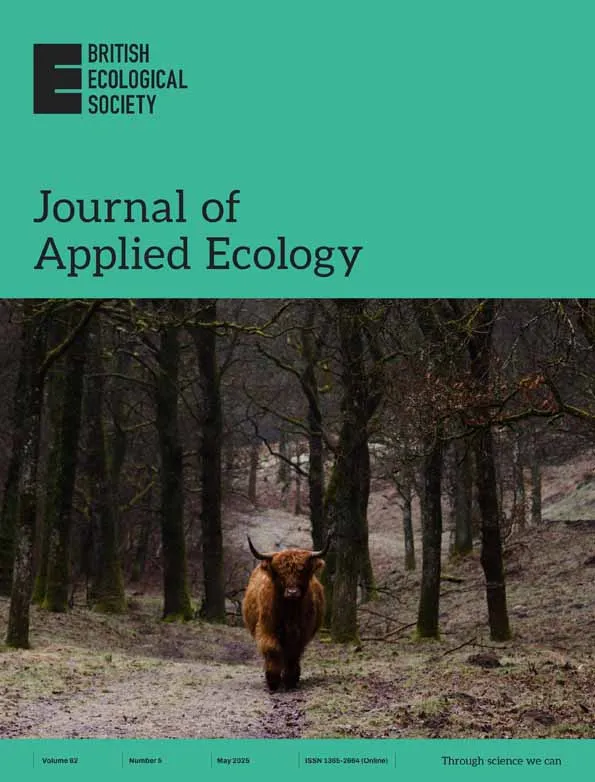
Changes in breeding wader populations of the Uist machair and adjacent habitats between 1983 and 2022
Author: Calladine, J., Fuller, R., Hodkinson, D., Franks, S. & Boyle, J.
Published: 2023
Periodic surveys of machair and associated habitats on the west coast of North Uist, Benbecula and South Uist have documented marked changes in the composition of an important breeding wader ...
15.06.23
Papers
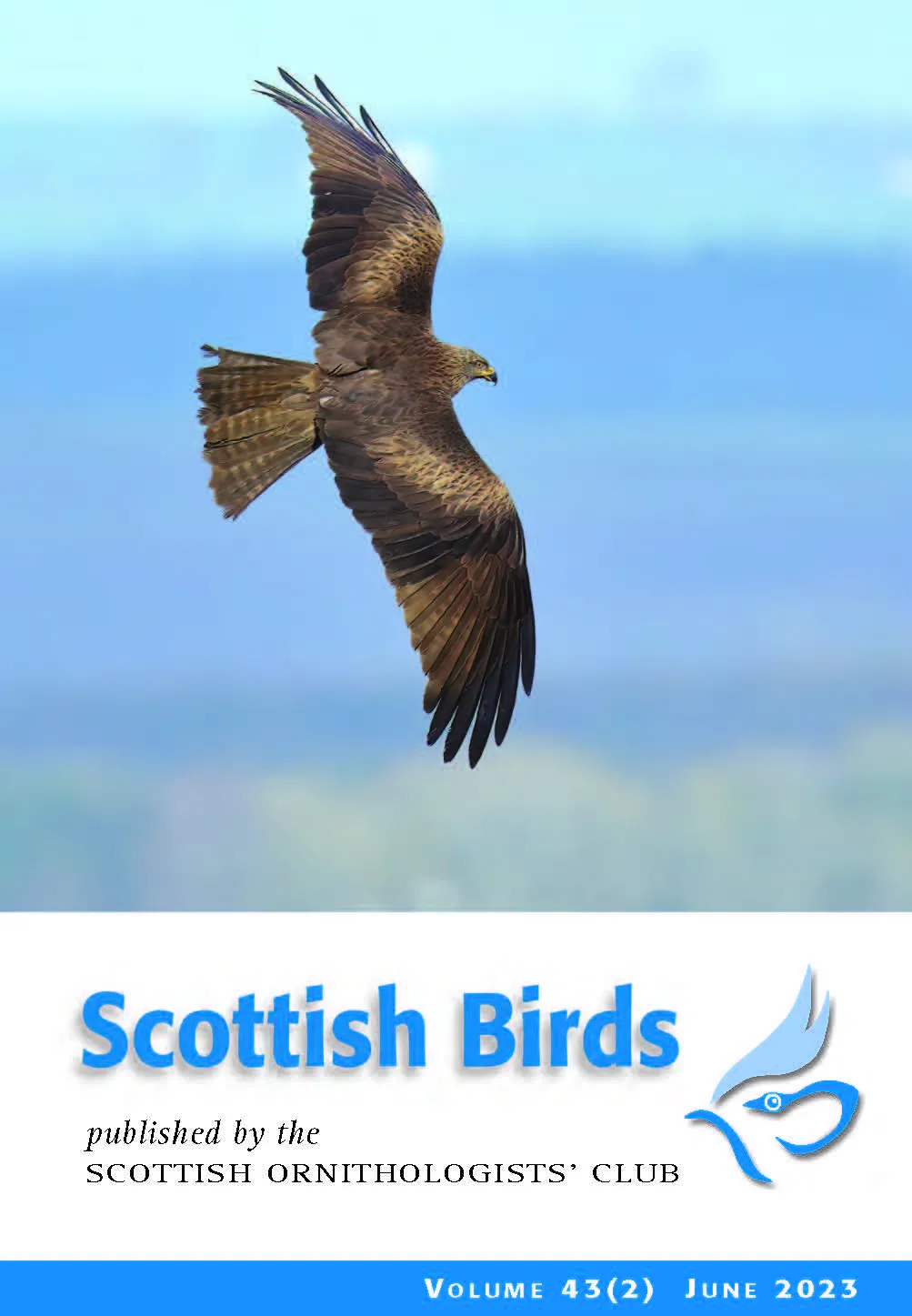
Loss of breeding waders from key lowland grassland sites in Northern Ireland
Author: Booth Jones, K.A., O’Connell, P., Wolsey, S., Carrington-Cotton, A., Noble, D.G., McCulloch, N. & Calladine, J.R.
Published: 2022
Between the mid-1980s and 2018–2019, Northern Ireland’s lowland wet grasslands saw a 73% decline in their breeding wader populations, from 1,296 to 354 pairs across 74 surveyed sites.
18.07.22
Papers
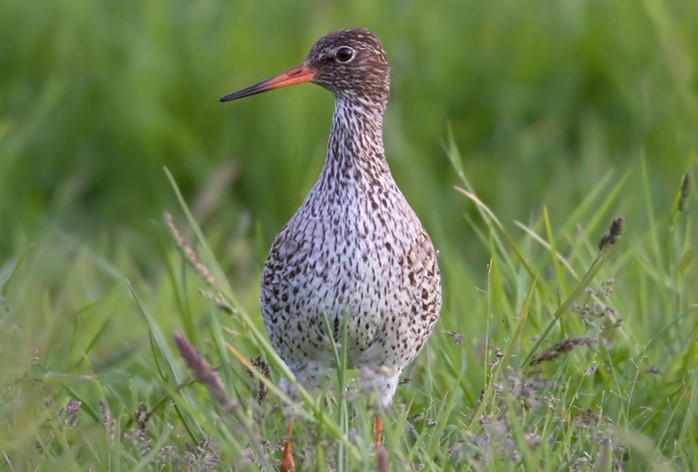
Sensitivity mapping for breeding waders in Britain: towards producing zonal maps to guide wader conservation, forest expansion and other land-use changes. Report with specific data for Northumberland and north-east Cumbria
Author: O’Connell, P., Wilson, M., Wetherhill, A. & Calladine, J.
Published: 2021
Breeding waders in Britain are high profile species of conservation concern because of their declining populations and the international significance of some of their populations. Forest expansion is ...
09.12.21
BTO Research Reports BTO Research Reports
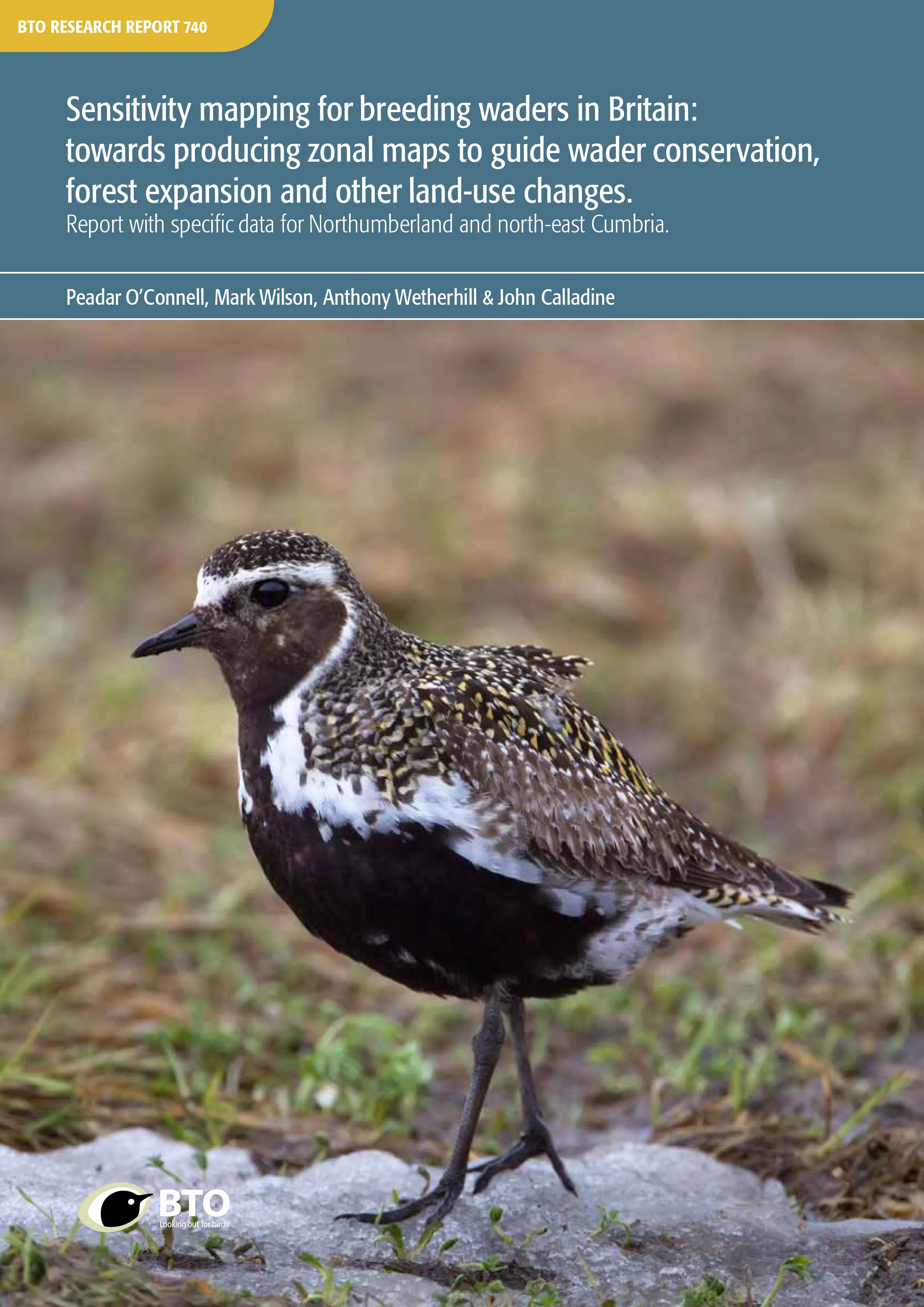
Long term changes in the abundance of benthic foraging birds in a restored wetland
Author: Mander, L., Scapin, L., Thaxter, C.B., Forster, R. & Burton, N.H.K.
Published: 2021
10.09.21
Papers
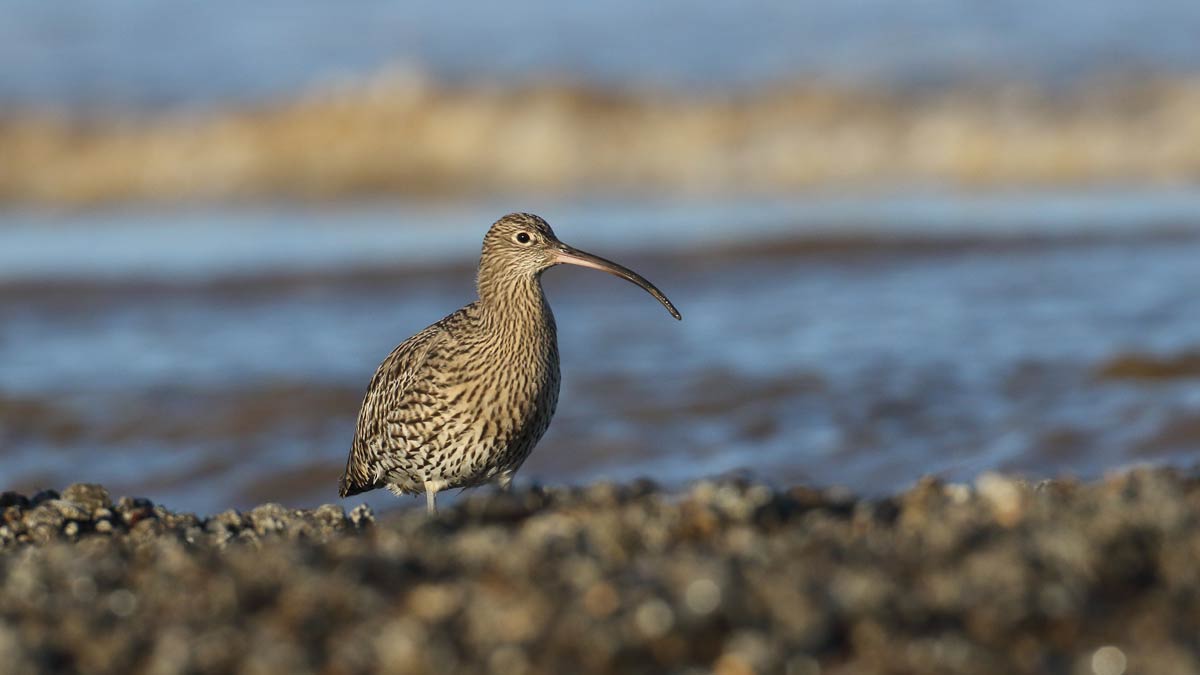
Monitoring Breeding Waders in Wensleydale: trialling surveys carried out by farmers and gamekeepers
Author: Jarrett, D., Calladine, J., Wernham, C., Wilson, M.
Published: 2017
21.11.17
Reports
Consequences of population change for local abundance and site occupancy of wintering waterbirds
Author: Méndez, V., Gill, J.A., Alves, J.A., Burton, N.H.K. & Davies, R.G.
Published: 2017
Protected sites for birds are typically designated based on the site’s importance for the species that use it. For example, sites may be selected as Special Protection Areas (under the European Union ...
20.09.17
Papers
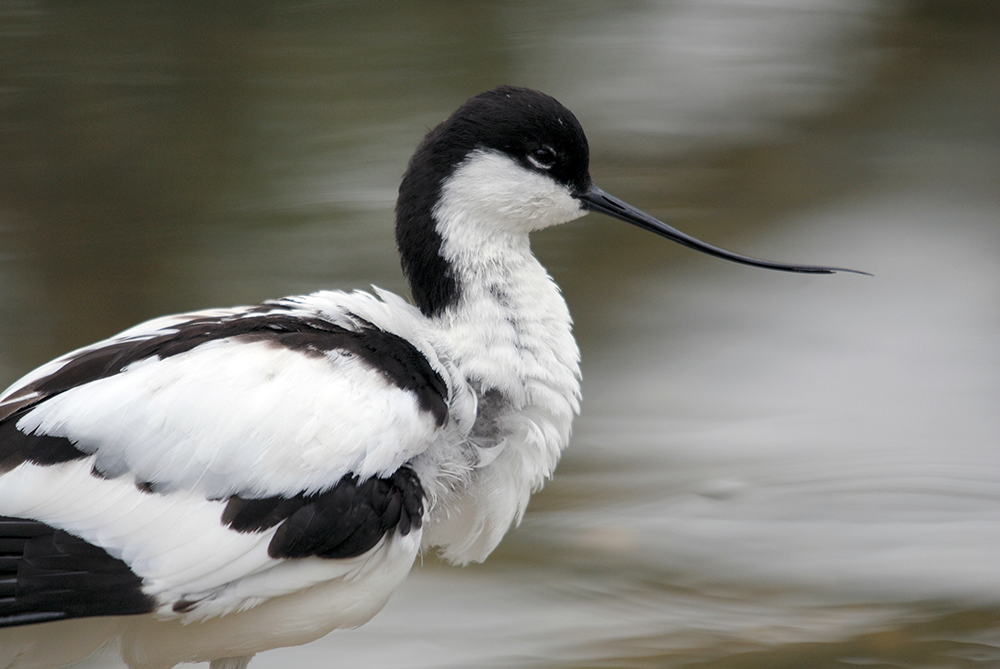
The decline of a population of farmland breeding waders: a twenty-five-year case study
Author: M.V. Bell, Calladine, J.
Published: 2017
The breeding populations of many different wader species are in decline across the globe, and the UK is no exception. These declines have been linked to increased predator numbers, changes in ...
12.04.17
Papers Bird Study
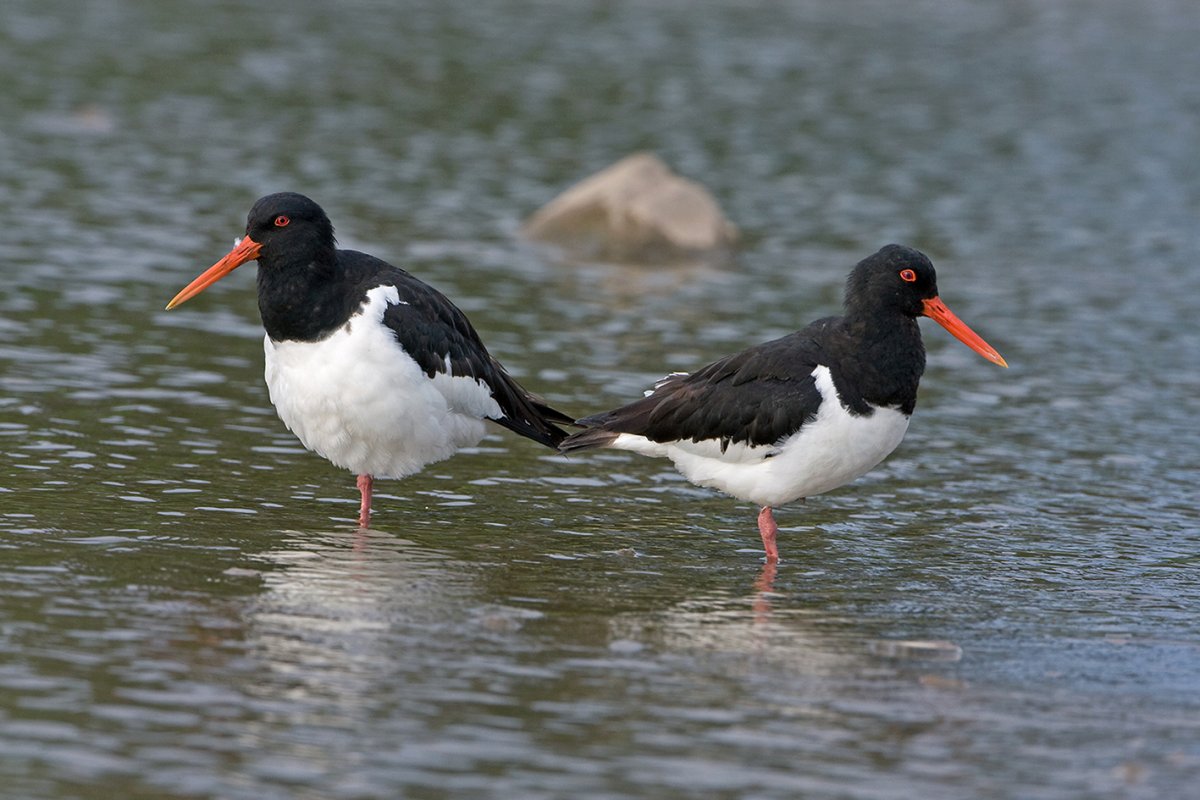
Predicting densities of wintering Redshank Tringa totanus from estuary characteristics: a method for assessing the likely impact of habitat change
Author: Rehfisch, M.M., Austin, G.E., Clark, N.A., Clarke, R.T., Holloway, S.J., Yates, M.G., dit Durrel, S.E.A. le V., Eastwood, J.A., Goss-Custard, J.D., Swetnam, R.D. & West, J.R.
Published: 2000
01.01.00
Papers
Variation in sighting frequencies of colour-ringed Redshanks Tringa totanus according to ringing scheme and ring colour
Author: Burton, N.H.K.
Published: 2000
01.01.00
Papers
Winter site-fidelity and survival of Redshank Tringa totanus at Cardiff, south Wales
Author: Burton, N.H.K.
Published: 2000
01.01.00
Papers Bird Study
Reaction of Redshank Tringa totanus to colour-rings
Author: Burton, N.H.K.
Published: 2001
01.01.01
Papers Ringing and Migration
Impacts of sudden winter habitat loss on the body condition and survival of redshank Tringa totanus
Author: Burton, N.H.K., Rehfisch, M.M., Clark, N. & Dodd, S.G.
Published: 2006
01.01.06
Papers
More Evidence
More evidence from Conservation Evidence.com
Partners
Citing BirdFacts
If you wish to cite particular content in this page (e.g. a specific value) it is best to use the original sources as linked in the page. For a more general citation of the whole page please use: BTO (20XX) BirdFacts Species: profiles of birds occurring in the United Kingdom. BTO, Thetford (www.bto.org/birdfacts, accessed on xx/xx/xxxx).

